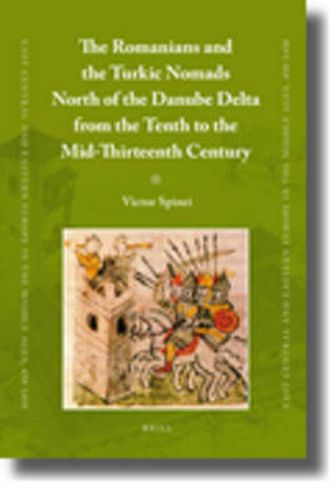Readings Newsletter
Become a Readings Member to make your shopping experience even easier.
Sign in or sign up for free!
You’re not far away from qualifying for FREE standard shipping within Australia
You’ve qualified for FREE standard shipping within Australia
The cart is loading…






The author of the present volume aims to investigate the relationships between Romanians and nomadic Turkic groups (Pechenegs, Uzes, Cumans) in the southern half of Moldavia, north of the Danube Delta, between the tenth century and the great Mongol invasion of 1241-1242. The Carpathian-Danubian area particularly favoured the development of sedentary life, throughout the millennia, but, at various times, nomadic pastoralists of the steppes also found this area favourable to their own way of life. Due to the basic features of its landscape, the above-mentioned area, which includes a vast plain, became the main political stage of the Romanian ethnic space, a stage on which local communities had to cope with the pressures of successive intrusions of nomadic Turks, attracted by the rich pastures north of the Lower Danube. Contacts of the Romanians and of the Turkic nomads with Byzantium, Kievan Rus’, Bulgaria and Hungary are also investigated. The conclusions of the volume are based on an analysis of both written sources (narrative, diplomatic, cartographic) and archaeological finds.
$9.00 standard shipping within Australia
FREE standard shipping within Australia for orders over $100.00
Express & International shipping calculated at checkout
The author of the present volume aims to investigate the relationships between Romanians and nomadic Turkic groups (Pechenegs, Uzes, Cumans) in the southern half of Moldavia, north of the Danube Delta, between the tenth century and the great Mongol invasion of 1241-1242. The Carpathian-Danubian area particularly favoured the development of sedentary life, throughout the millennia, but, at various times, nomadic pastoralists of the steppes also found this area favourable to their own way of life. Due to the basic features of its landscape, the above-mentioned area, which includes a vast plain, became the main political stage of the Romanian ethnic space, a stage on which local communities had to cope with the pressures of successive intrusions of nomadic Turks, attracted by the rich pastures north of the Lower Danube. Contacts of the Romanians and of the Turkic nomads with Byzantium, Kievan Rus’, Bulgaria and Hungary are also investigated. The conclusions of the volume are based on an analysis of both written sources (narrative, diplomatic, cartographic) and archaeological finds.